Steam Deck vs Nintendo Switch OLED: two different forms of handheld gaming
Nintendo’s got some serious competition
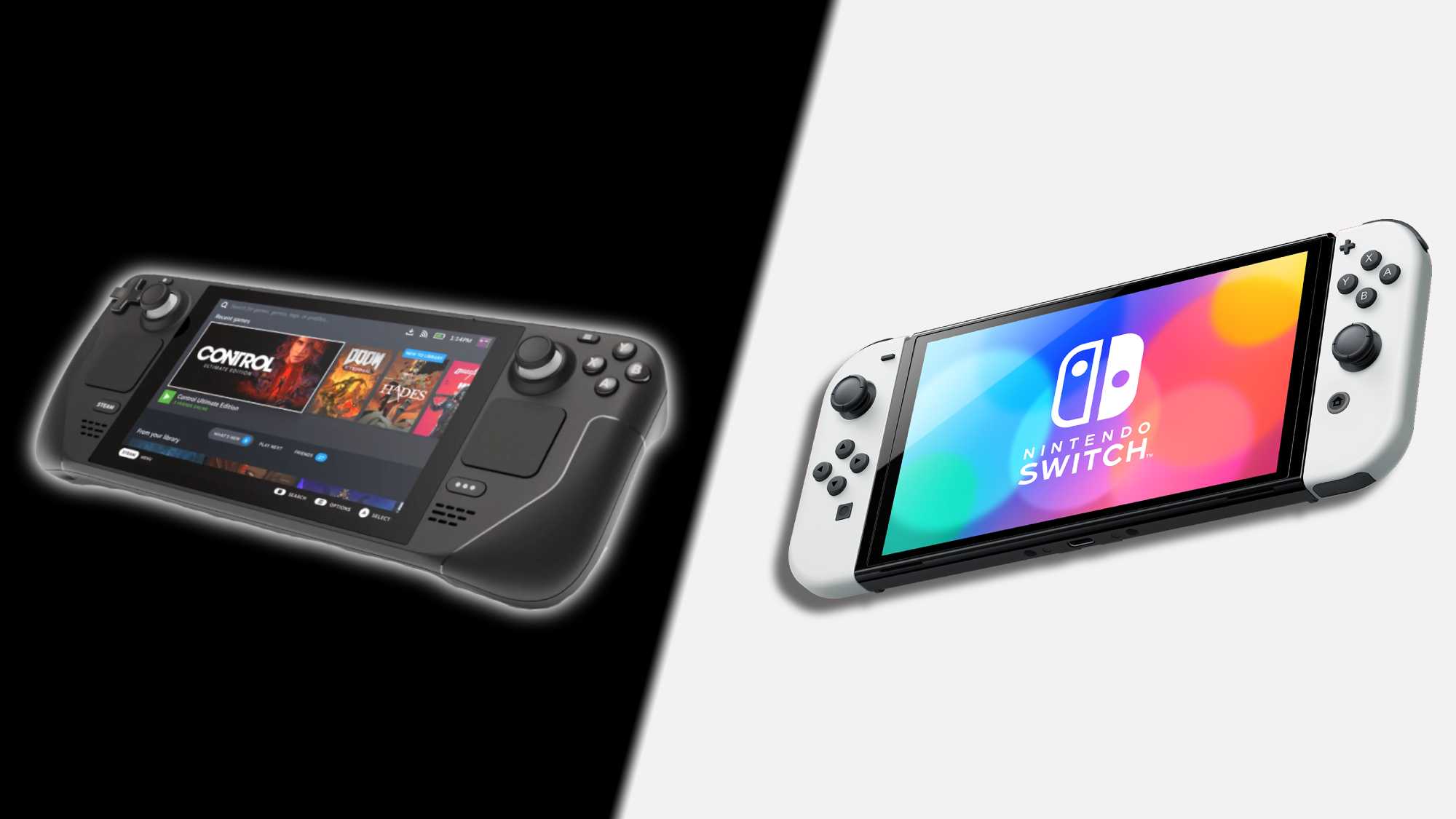
The Nintendo Switch OLED has really shaken up the handheld console space thanks its gorgeous OLED panel but it's far from the only top handheld in town after the arrival of the Steam Deck.
The Steam Deck can be viewed as something like a Nintendo Switch Pro. The Steam Deck boasts considerably more powerful hardware specs and is capable of running the latest AAA games at decent framerates with good image quality.
Rather than a conventional console, the Steam Deck is also a portable PC, so it’s capable of so much more than other handheld devices. Hook it up to a docking station and a monitor, plus attach some Bluetooth and USB accessories, and yoou can even use it for productivity tasks.
It’s a very different proposition to the Nintendo Switch OLED in several ways, then. But one thing that they both have in common is the ability to play games, natively, on the move. If Valve’s handheld system has caught your eye, we’re putting it head-to-head against the Nintendo Switch OLED to see which one comes out on top.
Steam Deck vs Nintendo Switch OLED - price and release date
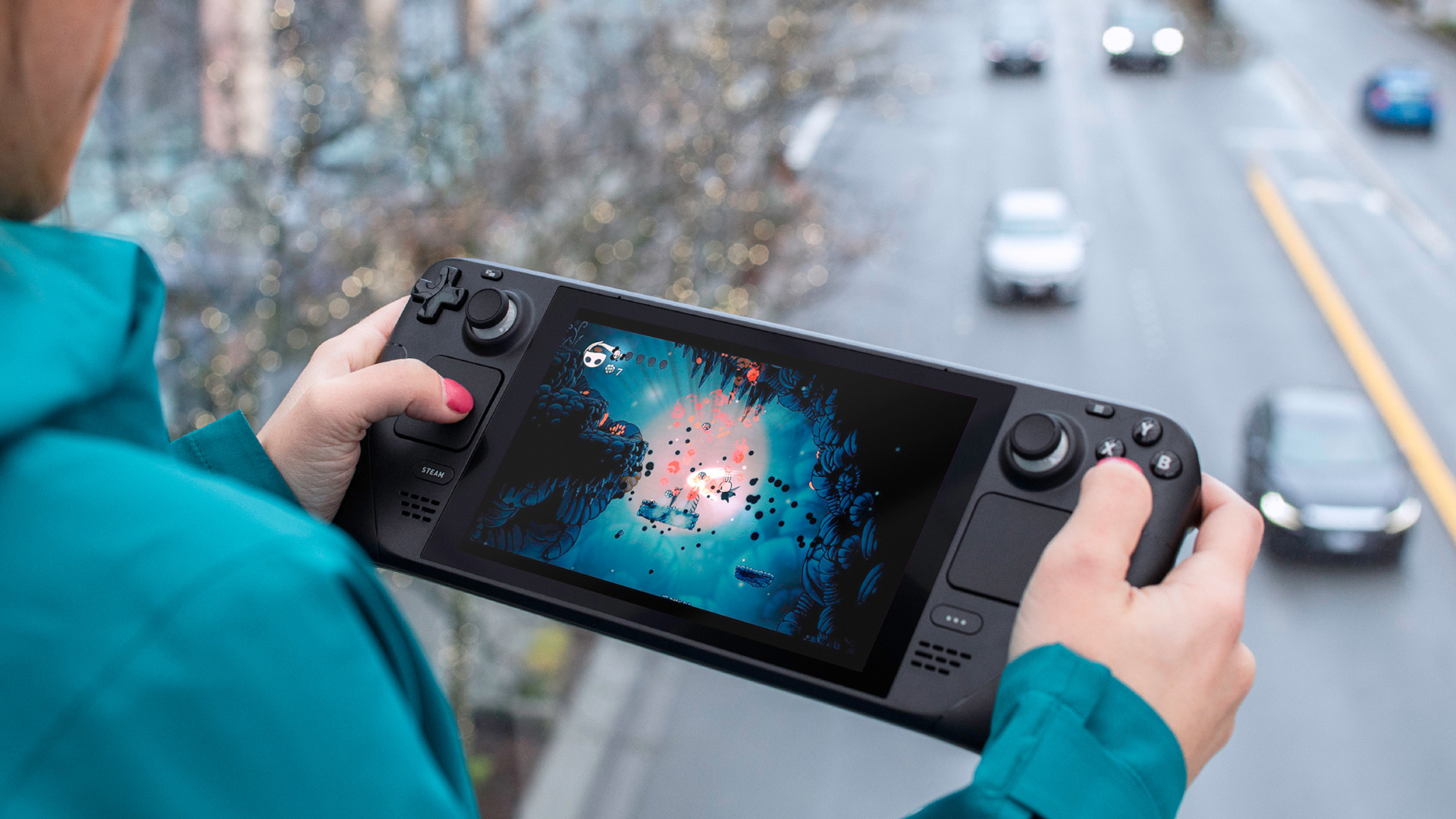
Valve’s Steam Deck costs $399 / £349 for its entry-level 256GB LCD model, which is the closest match to the Nintendo Switch OLED. After a delayed launch in early 2022, you've since been able to buy a Steam Deck without a long reservation for quite some time now. You can do so by heading to the Steam Store.
The Nintendo Switch OLED retails at $349 / £309 / AU$539 and launched on October 8, 2021. The Switch OLED is $50 / £40 cheaper, then, and while the Steam Deck boasts more storage both consoles can have their storage expanded via the included microSD card slot found on the systems.
Steam Deck vs Nintendo Switch OLED - design and features
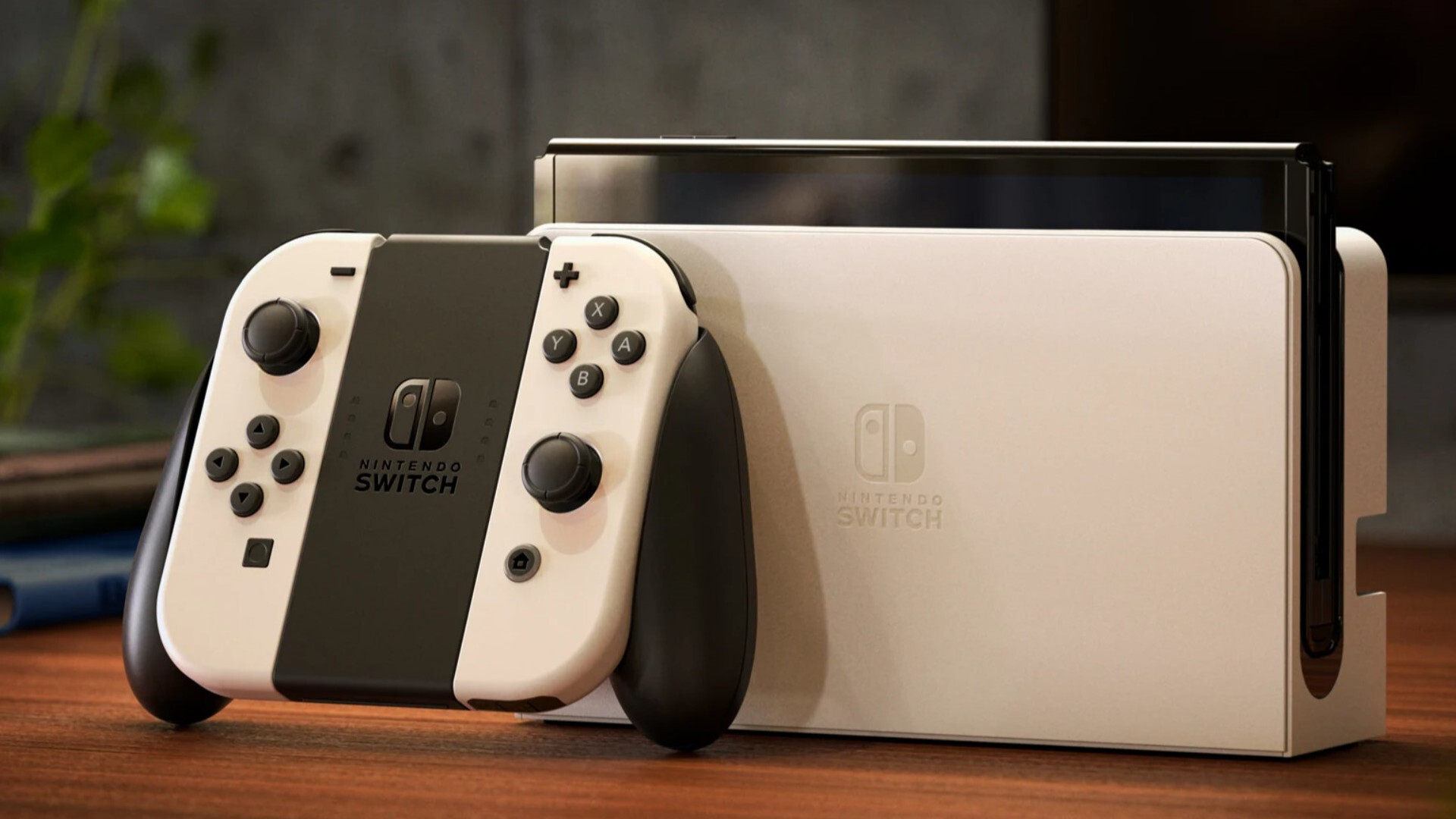
While both the Steam Deck and Nintendo Switch OLED are portable, they do differ significantly when it comes to technical specifications and design. Both systems come equipped with a 7-inch touchscreen (the Steam Deck has a resolution of 1280x800 and the Switch OLED is 1280x720), though the Nintendo Switch OLED boasts an OLED display. This means it should offer more vibrant colors, inky black and better contrast ratio than the LCD screen on the Steam Deck. Both screens have a max refresh rate of 60Hz.
Valve also now offers the Steam Deck OLED, however. This enhanced version comes in at a pricier $549 / £479 for a base model with 512GB of storage which could be worth bearing in mind if you're willing to splash out for a more premium display.
In terms of controls, the Steam Deck features two analog sticks and two touchpads that can replicate mouse movement. They have capacitive touch sensors built-in, which will detect when your thumbs are active. You’ll also find the usual face buttons, bumper and trigger buttons, as well as gyroscope control included. It’s worth noting that the triggers on the Steam Deck are analog, not digital like on the Switch OLED, which means they can provide more fine-grain control. The Steam Deck adds further inputs via the four grip buttons on the back of the device, which provide extra inputs when playing games.
The Nintendo Switch OLED comes with the Joy-Con controllers that we have been used to since 2017. The Joy-Con controllers feature HD Rumble, motion controls and can be detached from the console, enabling local multiplayer at a moment’s notice if you’re playing in tabletop mode. Thanks to the Switch OLED’s redesigned, wider stand, this should be far more appealing and easier to do than ever before. The Steam Deck’s controllers cannot be detached and it doesn’t come with a kickstand either.
However, both the Steam Deck and Nintendo Switch OLED can be docked to output to a TV – although Valve hasn’t revealed it’s official dock, which will be sold separately. Unlike the Switch OLED, though, the Steam Deck can be output to a TV or monitor via its USB Type-C port and a USB Type-C dock. This gives the handheld much more flexibility, and it can also output at higher resolutions than 1080p.
Steam Deck vs Nintendo Switch OLED - specs
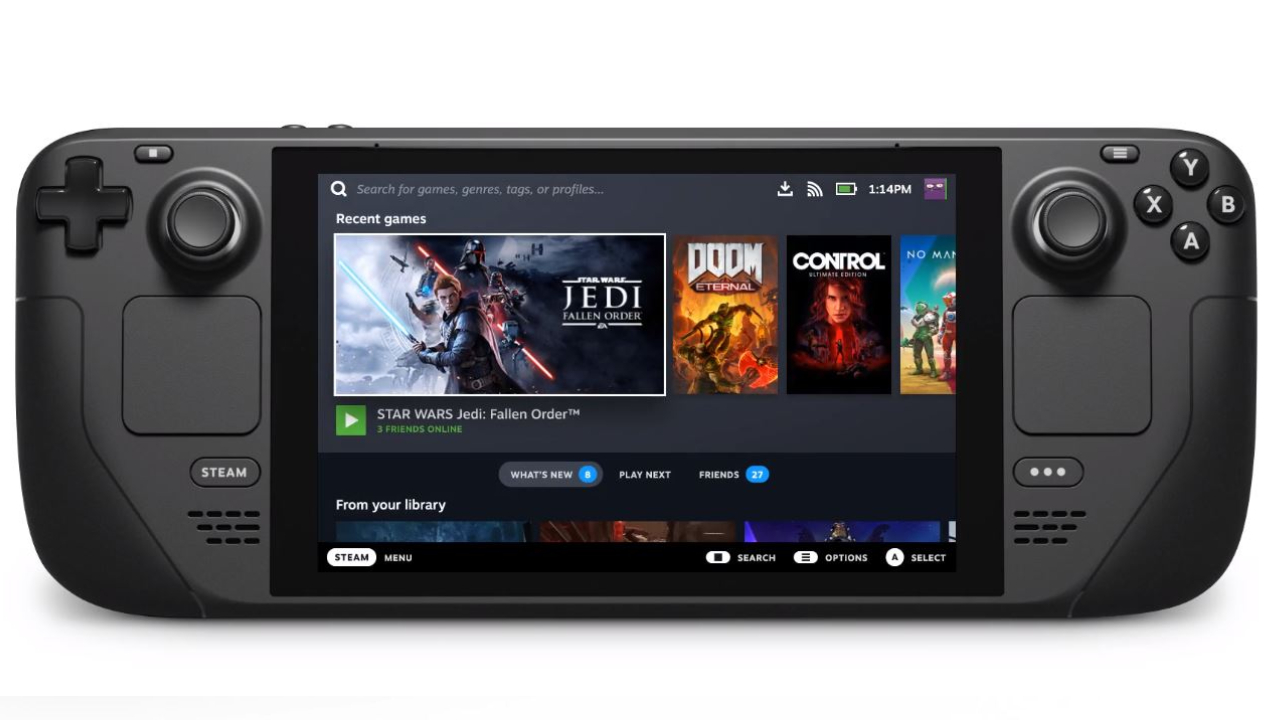
When it comes to technical specifications, the Steam Deck and Nintendo Switch OLED share some similarities when it comes to storage and screen size, but the Steam Deck is a far more capable machine. Here’s a full breakdown of the Steam Deck’s vital statistics:
- Size: 298mm x 177mm x 49mm (W x H x D)
- Weight: Approx 669 grams
- CPU: AMD Zen 2 4c/8t, 2.4-3.5GHz (up to 448 GFlops FP32)
- GPU: 8 RDNA 2 CUs, 1.0-1.6GHz (up to 1.6 Tflops FP32)
- RAM: 16GB LPDDR5 RAM
- Storage: 256GB NVMe SSD
- Display resolution: 1280 x 800px (16:10 aspect ratio)
- Display size: 7-inch diagonal
- Brightness: 400 nits typical
- Refresh rate: 60Hz
- Touch enable: Yes
- Connectivity: Bluetooth 5.0, Dual-band Wi-Fi radio, 2.4GHz and 5GHz
- Audio: Stereo speakers, dual microphone array, 3.5mm stereo headphone jack
- Power: 45W USB Type-C
- Battery life: 2 to 8 hours of gameplay
- Operating system: SteamOS 3.0
Valve’s machine is certainly impressive, then, and should allow the system to run most AAA games at medium to high settings at 720p/60fps. That’s a far cry from the Nintendo Switch, which has historically struggled to get third-party titles running above 30fps, and resolution usually has to be sacrificed as a result.
That doesn’t mean the Switch OLED isn’t still a great piece of hardware, though, particularly as you won’t find phenomenal exclusives like The Legend of Zelda: Tears of the Kingdom and Mario Kart 8 Deluxe anywhere else. Here’s what’s inside the Nintendo Switch OLED:
- Size: 9.5 x 0.55 x 4 inches (w x d x h)
- Weight: Approximately 0.71 lbs / 0.93 lbs with Joy-Con controllers attached
- Screen: Multi-touch capacitive touch screen / 7-inch OLED screen
- Resolution: 1280 x 720 (720p)
- CPU/GPU: Nvidia Custom Tegra processor
- Storage: 64GB (can be expanded using microSDHC or microSDXC cards up to 2TB)
- Wireless: WI-Fi (802.11 a/b/g/n/ac compliant)
- Video output: Up to 1080p via HDMI in TV mode, 720p in handheld mode
- Audio output: 5.1 Linear PCM
- Speakers: Stereo
- USB connector: USB Type-C for charging
- 3.5mm headphone jack
- Battery life: approximately 4.5-9 hours
- Charging time: approximately 3 hours
The Nintendo Switch OLED sports the same technical specifications as the original Nintendo Switch, which was disappointing news for some. The console is starting to show its age in the graphics department after almost five years on sale, but that doesn’t mean Nintendo isn’t capable of producing some surprisingly great results.
If you’re someone who doesn’t care about high framerates and resolutions, the Nintendo Switch OLED should at least make the Switch’s library of titles look better than before in handheld mode thanks to the crisp new display.
Steam Deck vs Nintendo Switch OLED - games

One advantage that the Steam Deck has over the Nintendo Switch OLED from the outset is that the majority of your Steam library will be playable on Valve’s new device. We say majority, because the truth is that not every PC title will be accessible. This is because the Steam Deck runs SteamOS, which is a Linux-based operating system. Some games also aren't compatible due to Steam's Easy Anti-Cheat system.
The Nintendo Switch is a more familiar proposition for console users. As a closed-garden, Nintendo dictates what titles are available on its hardware, and the fixed specs means that developers can benefit from knowing that every game they develop will run the same for every user.
Games are arguably the Switch’s biggest strength, too, as Nintendo’s first-party lineup continues to have serious pulling power with gamers. Titles such as Breath of the Wild, Super Mario Odyssey, Super Smash Bros. Ultimate and Animal Crossing: New Horizons have helped make the Switch top the sales charts each month.
Steam Deck vs Nintendo Switch OLED - verdict
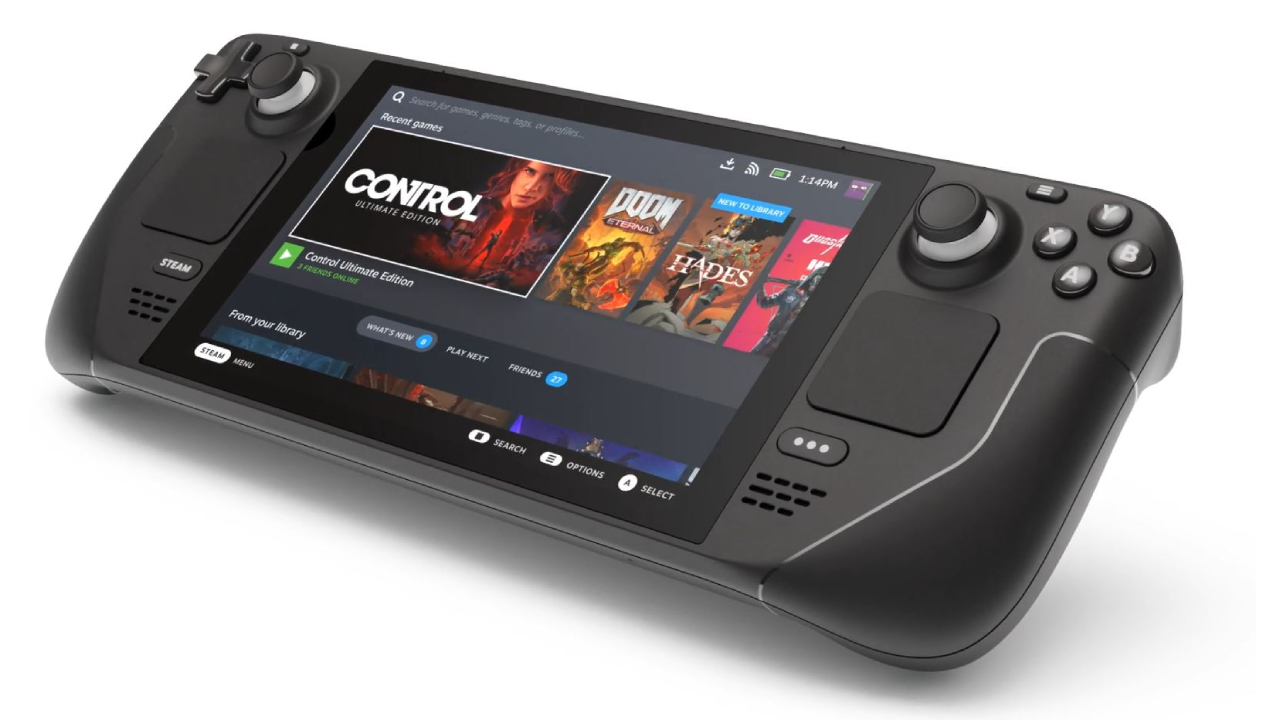
So which portable is right for you? Well, that depends. The Steam Deck may have the Switch OLED beat on paper, but Nintendo has the evergreen appeal of its fantastic library of titles which you can’t play anywhere else.
The Switch is also a console that has the benefit of allowing local multiplayer by detaching the Joy-Con, it has a proven track record since its launch of delivering a great experience. However, the Steam Deck will instantly appeal to those who were craving a Switch-like device that’s capable of better performance.
The fact it’s being created by Valve with all the bells and whistles of Steam shouldn’t be underestimated, either. Time will tell whether it’s as ergonomic or as reliable as the Switch (Joy-Con drift aside), but it’s the first real competitor to Nintendo’s dominance over the handheld market since Sony’s ill-fated PlayStation Vita.
Recently purchased a Steam Deck or Switch OLED? Consider checking out our list of the best Steam games and best Nintendo Switch games to get your collection going on either device.
Get daily insight, inspiration and deals in your inbox
Sign up for breaking news, reviews, opinion, top tech deals, and more.
Adam was formerly TRG's Hardware Editor. A law graduate with an exceptional track record in content creation and online engagement, Adam has penned scintillating copy for various technology sites and also established his very own award-nominated video games website. He’s previously worked at Nintendo of Europe as a Content Marketing Editor and once played Halo 5: Guardians for over 51 hours for charity. He is now an editor at The Shortcut.
- Dashiell WoodHardware Writer
